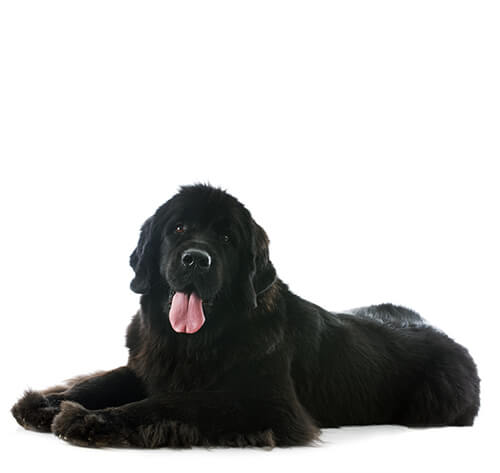
A strong, multipurpose working dog, the Newfoundland is big in size yet sweet in temperament. This noble breed is a master swimmer with natural lifesaving instincts, and his thick, plush coat protects him from frigid waters. Intelligent and friendly, the Newfoundland is easy to train and is a great fit for families with children. He requires daily exercise, and his coat needs to be brushed regularly.
DID YOU KNOW? The Newfoundland was a popular choice for several former U.S. Presidents. James Buchanan owned a female named “Lara,” Rutherford B. Hayes had a male called “Hector,” and Ulysses Grant’s son, Jesse, owned a male named “Faithful.”
The need-to-know
- Dog suitable for experienced owners
- Some training required
- Enjoys active walks
- Enjoys walking an hour a day
- Giant dog
- Heavy drool
- Requires grooming daily
- Non hypoallergenic breed
- Quiet dog
- Guard dog. Barks, alerts and it's physically protective
- Great with other pets
- Great family dog
Personality

Newfoundland dogs are docile, gentle and make great family pets, getting on well with both people and other animals. They have a natural life-saving instinct, which can be a nuisance when they continually try to drag you out of the water! They are outgoing dogs, full of energy and said to be one of the friendliest breeds.
History and Origins

The Newfoundland dog is best described as being a gentle giant. They are large and heavy in both bone and coat. As puppies they look like a cuddly teddy bear but this stage does not last long as they grow very quickly. They can be black, brown or white and black (Landseer) in colour. The average adult male is 71cm in height and 64-69kg in weight; adult females are 66cm and 50-54.5kg.
Nutrition and Feeding

Giant-breed dogs, as well as having giant appetites, benefit from a different balance of minerals and vitamins, supporting different joint and cartilage needs. The Newfoundland dog is prone to bloating and stomach problems; try feeding smaller, more frequent meals to help minimise the risk.
Exercise

Newfoundland puppies should have all their exercise monitored while growing to ensure that no damage occurs to the bones and joints. They love water, swimming being one of their favourite forms of exercise. A fit, healthy adult needs at least an hour's daily exercise and will happily take more.
Other Information

Health and Common Issues
As with many dogs, the Newfoundland breed can suffer from hip and elbow dysplasia (joint conditions that can be painful and lead to mobility problems). They are also prone to a particular bladder condition and heart disease.
Best Family Dog Breeds
While many dogs are traditionally thought of as being good with children, all dogs and children need to be taught to get on with and respect each other, and be safe together. Even so, dogs and young children should never be left alone together and adults should supervise all interactions between them.